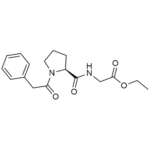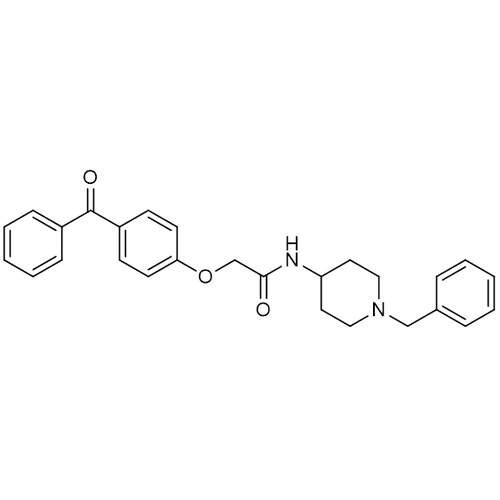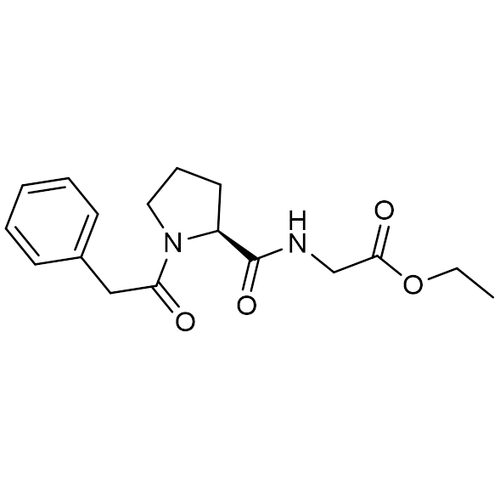| Product Name | Noopept |
| Description |
Neuroprotective Agent |
| Purity | >98% (HPLC); NMR (conforms) |
| CAS No. | 157115-85-0 |
| Molecular Formula | C17H22N2O4 |
| Molecular Weight | 318.4 |
| Field of Use | Not for use in humans. Not for use in diagnostics or therapeutics. For in vitro research use only. |
Properties
| Storage Temperature | -20ºC |
| Shipping Temperature | Shipped Ambient |
| Product Type | Agent |
| Solubility | May be dissolved in DMSO (25 mg/ml) |
| Source | Synthetic |
| Appearance | White powder |
| SMILES | O=C(CC1=CC=CC=C1)N2CCC[C@H]2C(NCC(OCC)=O)=O |
| InChI | Inchi=1S/C17H22N2O4/c1-2-23-16(21)12-18-17(22)14-9-6-10-19(14)15(20)11-13-7-4-3-5-8-13/h3-5,7-8,14H,2,6,9-12H2,1H3,(H,18,22)/t14-/m0/s1 |
| InChIKey | PJNSMUBMSNAEEN-AWEZNQCLSA-N |
| Safety Phrases | Not a hazardous substance or mixture. |
| Cite This Product | Noopept (StressMarq Biosciences Inc., Victoria BC CANADA, Catalog # SIH-636) |
Biological Description
| Alternative Names | 1-(2-Phenylacetyl)-L-prolyl-glycine ethyl ester; or N-Phenylacetyl-L-prolylglycine ethyl ester; SGS-111; GVS 111 |
| Research Areas | Glutamate Receptors, Neurodegeneration, Neuroscience, Neurotransmission, Neurotransmitter Receptors, Parkinson's Disease, Synuclein |
| PubChem ID | 180496 |
| Scientific Background | A novel proline-containing dipeptide with nootropic and cognition-enhancing activity (1). Rescues alpha-synuclein amyloid toxicity in cellular models (2). Stimulates the expression of NGF and BDNF in rat hippocampus (3). Improves viability of hippocampal HT-22 neurons in a glutamate toxicity model (4). Normalizes blood glucose level and tolerance to glucose load in a streptozotocin diabetic rat model of developing diabetes (5). |
| References |
1.,RU Ostrovskaya et al. J. Psychopharmacol. 2007 21:611 2.,X Jia et al. J. Mol. Biol. 2011 414:699 3.,RU Ostrovskaya et al. Bull. Exp. Biol. Med. 2008 146:334 4.,TA Antipova et al. Bull. Exp. Biol. Med. 2016 161:58 5.,RU Ostrovskaya et al. Bull. Exp. Biol. Med. 2014 156:342 |




Reviews
There are no reviews yet.